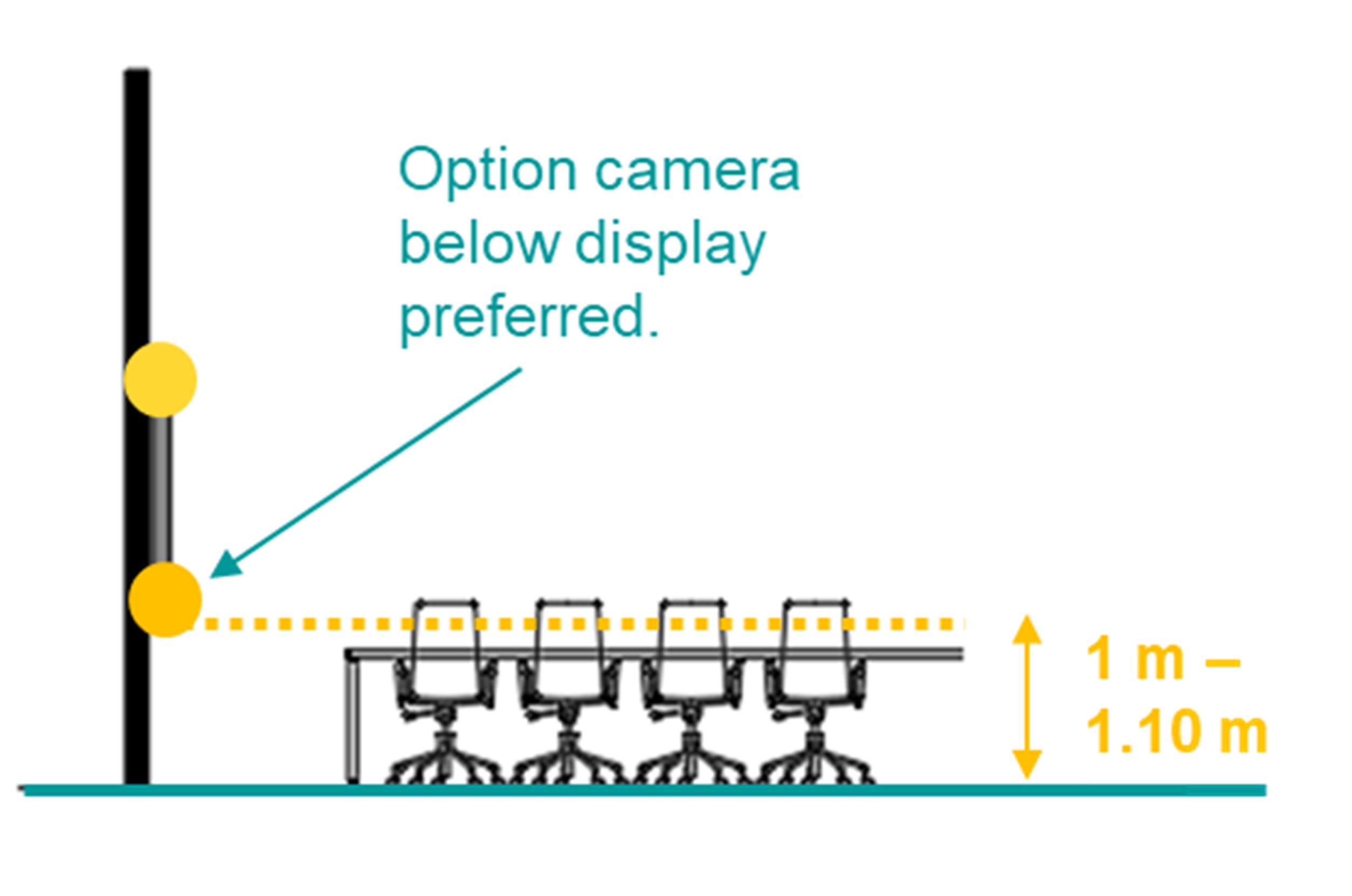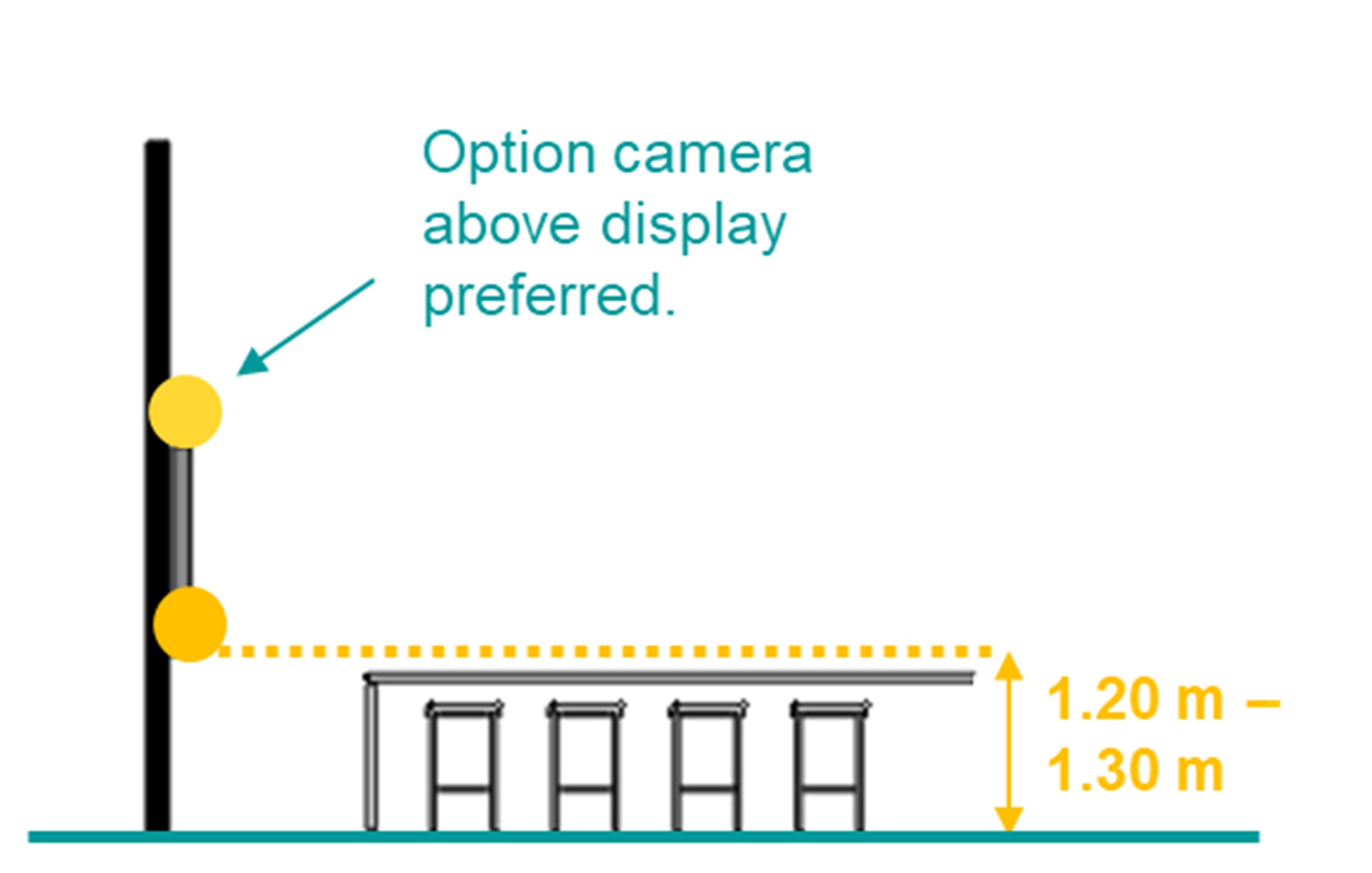Understand and plan Teams Room accessories, components, and peripherals
When planning and designing your physical meeting rooms, there are several things you should take into consideration:
Number of seats and usage scenario
Windows and blinds
Furniture, tables, and chairs
Wall material
Internet connectivity
Hardware peripherals
Acoustics and sound
When you decide to invest in new Microsoft Teams Rooms, you need to think about the available rooms in your building and how the physical environment affects your setup.
Number of seats and usage scenario
The number of available seats in the meeting room and its planned usage scenario are the most important aspects for planning your Teams Room. If the room is to be used for video calls only, it's important that each person in the room has enough space to sit. However, if the room is also to be used as a collaboration space for brainstorming, whiteboarding, or other creative activities, it's best to provide more space for the occupants so that they don't get in each other's way and can move about the room freely.
In general, room sizes are defined to ensure a comfortable experience for both local and remote participants. This is just a recommendation, and not an obligation, but is based on industry norms. Recommendations for minimum room dimensions based on usage scenarios are included in the following table:
| Type | Size | Occupants | Screen size | Recommended Peripherals |
|---|---|---|---|---|
| Small Meeting Rooms | 16' x 16' | 4-6 | >= 55 inch | |
| Medium Meeting Rooms | 18' x 20' | 6-12 | >= 65 inch | Additional table microphones with integrated mute button |
| Large Meeting Rooms | 15' x 32' | 12-16 | >= 85 inch or projectors | External microphone arrays for high quality |
Windows and blinds
If your meeting room has windows, check when and if too much light shines into the room. Depending on the orientation of the windows, it can cause the content on a display to become unreadable due to the glare through the windows. If roller blinds are already in place, you likely have nothing to worry about. However, you might need to plan ahead to mitigate the issue by sticking a blackout film to the window or installing internal roller blinds with blackout curtains.
In addition, the camera and display should be aligned in such a way that they aren't directed into the light. When the camera is pointed into the light, the automatic focus shows the participants in the room as dark and washed out.
Lastly, you should think about adequate ventilation for your device and peripherals. The room's display, camera, and the devices brought by the occupants all generate heat. Additional sunshine through the windows can heat up the room, causing devices and people to overheat.
Furniture, tables, and chairs
How you decorate your meeting space with furniture is entirely up to you. However, you should note that your choice of tables and chairs affect the installation of your camera and display. If you use normal tables with a standard height, the mounted camera should be attached at a relative height for the best view. It's important that the camera is always aligned in such a way that it can see as little of the table as possible. It's recommended to attach a privacy screen to the front lower edge of the table so that the participants can't be filmed under the table.

If you plan to use a bar-style, stand-up table with a raised height, you want to increase the height of the camera relative to the height of the table. The tables should also be wide enough that each local participant has a comfortable working surface.

Wall material
Make sure the walls have enough support to hang displays and other peripherals and that the room is sufficiently sound proofed for privacy. If glass windows, walls, or doors are installed, make sure they include a privacy screen so that sensitive content of the meeting can't be seen from the outside.
Acoustics and sound
If there's an acoustic echo in your room, complete the interior of the room with sound-insulating elements. To prevent sound even better, it's recommended to use a carpeted floor in the room so that the sound waves don't simply bounce off a floor that is too smooth, such as tiles, and cause an unclean audio quality.
Internet connection
Microsoft recommends a minimum bandwidth of 10 Mbit/s for each Teams Room device. This can be provided via LAN or WIFI. If the WiFi signal isn't strong enough, supplement your infrastructure with a WiFi access point in the immediate vicinity in order to be able to provide a stable bandwidth.
In general, Microsoft recommends a LAN connection for permanently installed Team Room devices, as this is considered more reliable. If it's a mobile meeting device, such as a Surface Hub, WiFi should be used so as not to restrict the mobility of the device.
Hardware peripherals
The selection of the hardware highly depends on your room layout. Each Microsoft Team Room certified device is only certified for a target room size. So that means you should choose the right hardware based on your room size.
The following things could be considered as general best practices for all meeting rooms:
In case you plan to use a touch controller on the table to control your meetings, make sure that unnecessary cables as power cord and USB are hidden. Cables can be laid in a cable duct below the floor.
The distance between your camera and the front of your table should be 1.5 m. This ensures that all participants are caught in the angle of the camera.
Provide a display cable (HDMI, DisplayPort, USB-C) attached to the table touch controller so that users can share their desktop screens.
The mounting position of the camera should be always above the edge of the table edge.
Place a How-To-Use guide in the room, which explains the features of the meeting room.
Teams Panels are additional devices connected to the Teams Room and they use the same resource account as the Teams Room to retrieve calendar entries. Panels can be used in combination with Windows, Android or interactive whiteboards.
Note
The information written in here are just the main things to think about. In our Design or update a meeting space guide you will find much more detailed information about the physical room requirements and recommendations.